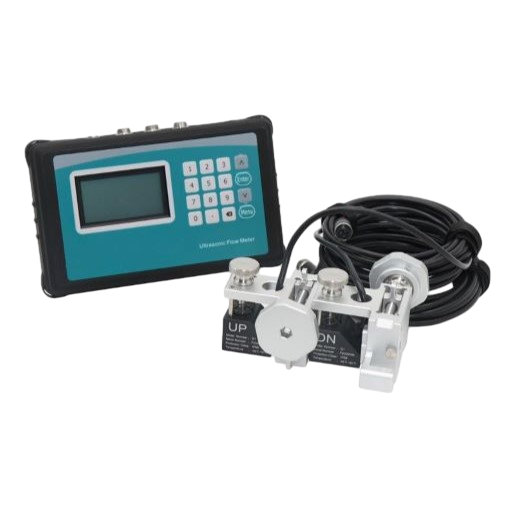Explain the advantages and disadvantages of ultrasonic flowmeter
2023-12-11
The advantages and disadvantages of ultrasonic flow meter are detailed
Advantages of ultrasonic flowmeter
1. Non-contact measurement:
The biggest advantage of ultrasonic flowmeters is that they can be measured without contact with the flow rate. This measurement avoids the disturbance and resistance caused by the contact flow rate, resulting in more accurate results.
2. High precision measurement:
The measurement accuracy of ultrasonic flowmeters is usually high, especially at stable flow rates, and the measurement error is usually within +19%. This high precision measurement capability makes ultrasonic flowmeters the preferred flow measurement equipment in many situations.
3. Wide measuring range:
The measuring range of the ultrasonic flowmeter is usually wide and can be adapted to a variety of flow rate ranges. This makes the ultrasonic flowmeter have a wider applicability in the face of different fluid media and different use scenarios.
4. Stable operation without maintenance:
In normal operation, ultrasonic flowmeters usually have a long service life and a low failure rate. In addition, because there are no moving parts inside, there is no need to carry out regular maintenance or replacement parts, greatly reducing the cost of use.
5. Adapt to various fluid media:
Ultrasonic flowmeters can be adapted to the measurement of various fluid media, including gas, liquid and mixed media. This makes it widely used in different fields, such as industrial production, environmental monitoring and municipal engineering.

The disadvantages of ultrasonic flowmeter
1. the impact of pipeline vibration:
Although ultrasonic flowmeters are non-contact measuring devices, in some cases, the vibration of the pipe may affect the measurement results. For example, in the case of unsteady fluid flow rate or large pipeline vibration, it may affect the reception and analysis of ultrasonic signals.
2. Complex measurement signal processing:
Ultrasonic flowmeter measurement signal processing is relatively complex, the need for data conversion and signal processing operations. This requires the use of corresponding electronic equipment and software for processing and analysis, increasing the cost of use and technical difficulty.
3. Limitations under high temperature and pressure:
The use of ultrasonic flowmeters at high temperatures and pressures may be limited. In high temperature and high pressure environments, the acoustic characteristics of the fluid may change, affecting the propagation and reception of ultrasonic signals. In addition, the material and structure of the pipeline under high temperature and pressure environment may also interfere with or absorb the ultrasonic signal, resulting in inaccurate measurement results.
Advantages of ultrasonic flowmeter
1. Non-contact measurement:
The biggest advantage of ultrasonic flowmeters is that they can be measured without contact with the flow rate. This measurement avoids the disturbance and resistance caused by the contact flow rate, resulting in more accurate results.
2. High precision measurement:
The measurement accuracy of ultrasonic flowmeters is usually high, especially at stable flow rates, and the measurement error is usually within +19%. This high precision measurement capability makes ultrasonic flowmeters the preferred flow measurement equipment in many situations.
3. Wide measuring range:
The measuring range of the ultrasonic flowmeter is usually wide and can be adapted to a variety of flow rate ranges. This makes the ultrasonic flowmeter have a wider applicability in the face of different fluid media and different use scenarios.
4. Stable operation without maintenance:
In normal operation, ultrasonic flowmeters usually have a long service life and a low failure rate. In addition, because there are no moving parts inside, there is no need to carry out regular maintenance or replacement parts, greatly reducing the cost of use.
5. Adapt to various fluid media:
Ultrasonic flowmeters can be adapted to the measurement of various fluid media, including gas, liquid and mixed media. This makes it widely used in different fields, such as industrial production, environmental monitoring and municipal engineering.

The disadvantages of ultrasonic flowmeter
1. the impact of pipeline vibration:
Although ultrasonic flowmeters are non-contact measuring devices, in some cases, the vibration of the pipe may affect the measurement results. For example, in the case of unsteady fluid flow rate or large pipeline vibration, it may affect the reception and analysis of ultrasonic signals.
2. Complex measurement signal processing:
Ultrasonic flowmeter measurement signal processing is relatively complex, the need for data conversion and signal processing operations. This requires the use of corresponding electronic equipment and software for processing and analysis, increasing the cost of use and technical difficulty.
3. Limitations under high temperature and pressure:
The use of ultrasonic flowmeters at high temperatures and pressures may be limited. In high temperature and high pressure environments, the acoustic characteristics of the fluid may change, affecting the propagation and reception of ultrasonic signals. In addition, the material and structure of the pipeline under high temperature and pressure environment may also interfere with or absorb the ultrasonic signal, resulting in inaccurate measurement results.
Share To:
News
- Why is the thermal gas mass flowmeter not affected by pressure strength and temperature?
- What to do when a thermal gas mass flow meter fails?
- How are thermal gas mass flow meters used? What are the applications?
- Under what circumstances is the gas measurement need to be regulated compensated vortex flowmeter
- Why Is The Aister Thermal Gas Mass Flowmeter So Popular ?
- Gas turbine flowmeter manufacturers explain their main advantages in measurement
- Gas turbine flowmeter manufacturer Aister instrument field experience summary
- Aister Instrument Empowerment Conference








